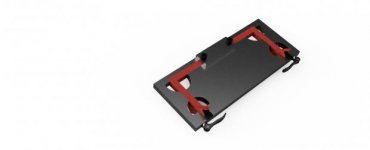Working on a welding jig to speed up production, it will hold .75" square steel tubing. I have prototyped it in Foam / MDF before I move to the more expensive 6061-T6 Aluminum. I want a tight fit for the steel to sit in the aluminum so the pieces can stay in place for welding, but not so tight that its a pain / takes up time to remove them.
When I prototyped in foam I didn't give any offset / add anything for tolerance... just kept it the same .75" and it fit very nicely, I think because the foam material is very soft... With MDF I did the same and the fit was a little tight. I imagine with Aluminum it will be even tighter so I will have to add a little bit of offset. If I remember right I got some good results doing an offset of .015" with MDF jig once.
In your experience what works well for aluminum? I saw a calculator on the net but it seemed a little more complex than what I was looking for.
I could try just milling one small piece and fitting, but it is pretty expensive for me, getting some ideas will help for starting point.
Thank you!


When I prototyped in foam I didn't give any offset / add anything for tolerance... just kept it the same .75" and it fit very nicely, I think because the foam material is very soft... With MDF I did the same and the fit was a little tight. I imagine with Aluminum it will be even tighter so I will have to add a little bit of offset. If I remember right I got some good results doing an offset of .015" with MDF jig once.
In your experience what works well for aluminum? I saw a calculator on the net but it seemed a little more complex than what I was looking for.
I could try just milling one small piece and fitting, but it is pretty expensive for me, getting some ideas will help for starting point.
Thank you!



